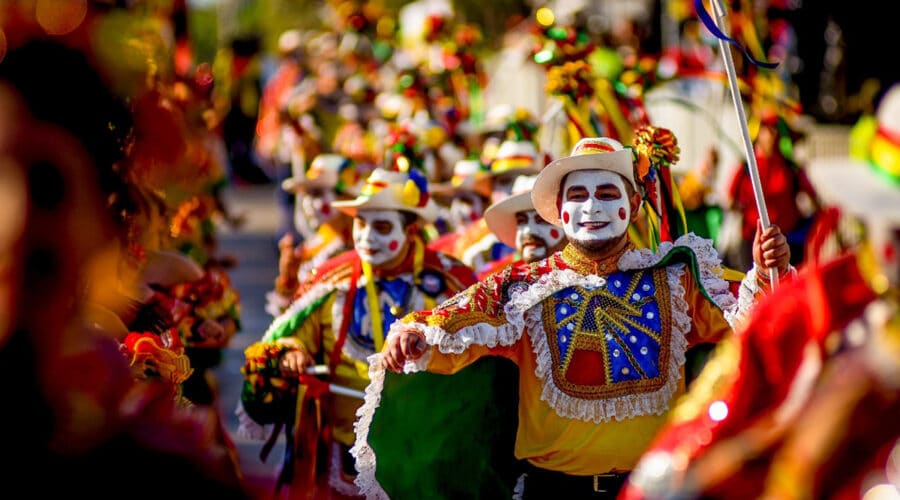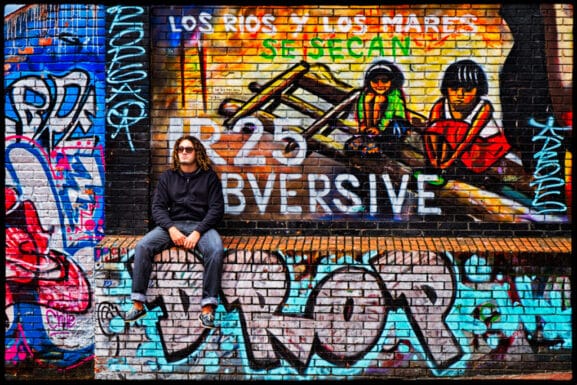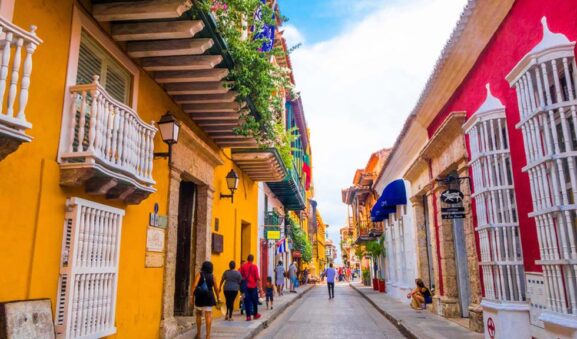7 THINGS TO KNOW BEFORE YOU GO TO BARRANQUILLA
In Colombia’s Golden Gate, dance (and eat) all night, then take a healing swim in a volcano. Just don’t give papaya.
1- Make the city your base. Barranquilla, on Colombia’s Caribbean coast, is a busy industrial city. It’s a less obvious destination for visitors compared to picturesque Cartagena to the south and Santa Marta—close to Tayrona National Park—to the north. But accommodation and flights are much cheaper, and Barranquilla is only a couple of hours away from its more famous neighbors. I always make it my headquarters when I spend time in the region. I’m a born-and-bred quillero with hometown pride. Barranquilla is nicknamed Colombia’s Golden Gate, because as an important port city it was the gateway for progress in Colombia: aviation, telephones, radio, trains, and fútbol all came to Barranquilla first.
2- Come for the carnival. In 2003, UNESCO declared Barranquilla’s carnival—Colombia’s largest—a masterpiece of humanity’s oral and intangible heritage. For four days, offices and businesses shut down and the streets fill with traditional costumes, parades, and general revelry. It’s the only time of year that Barranquilla swells with both domestic and international tourists (240,000 showed up for carnival in February 2016) and hotels and flights become really expensive. Plan ahead.

3- Get breakfast at a frutería. These café-like joints bring you the strange culinary bedfellows of rich, fried food and healthy, fresh fruit juice. Choose from empanadas (dough stuffed with ground beef, chicken, or cheese), carimañolas (torpedo-shaped yucca dough, stuffed meat or cheese), arepas de huevo (corn dough stuffed with fried egg), or papas rellenas (fried balls of mashed potatoes filled with ground beef). Don’t forget the suero costeño, a cream cheese dip. To drink, choose from orange, corozo, tangerine, lemon, lulo, passion fruit, pineapple, tamarind, blackberry, watermelon, carrot, and sapodilla juice. Fruterías are all over the place, but my favorites are Los Compadres (a few blocks north of Romelio Martínez stadium) and Los Primos, in Delicias quarter.
4- Double up on fish. Barranquilla is lucky enough to have access to the Atlantic Ocean and the Magdalena river, which means you’re spoiled for choice if you happen to like fish. Head to Las Flores, a quarter along the river with restaurants offering fresh catch from both bodies of water. (Try the great but reasonably-priced El Rincón del Proveedor.) From the sea, go for fried mojarra, coconut rice, and patacón (fried plantain slices). From the river, try bocachico, a fish stuffed with sautéed tomatoes, onions, sweet pepper, and garlic, wrapped in leaves from the bijao tree, and grilled.

5- Know your taxes. Colombia’s tourist offices encourage businesses to offer the same prices for locals and tourists, because they know that a pissed-off tourist is unlikely to return. But not everybody plays by the rules, and some places might try to charge foreigners more. To avoid common scams, always remember that taxes are the same around the country, and that all prices quoted should already include the tax. When in doubt, ask for prices before you order. Also, you will need cash for tiendas, kiosks, and cabs, but can use cards in supermarkets and restaurants. Just make sure they run your card through the reader in front of you. Consider yourself warned.

6- Find Gabo. In the 1940s, decades before he was awarded the Nobel Prize for Literature, Gabriel García Márquez was a member of the Barranquilla Group: a union of writers, journalists, and philosophers who met to discuss the arts, life, and to mamar gallo—literally “suck the cock”—here, it means taking the piss out of somebody or kidding around. (A fictionalized version of the group’s core members appear as the four friends of Macondo in Garcia Márquez’s One Hundred Years of Solitude.) In the 1950s, the group moved their meetings to a restaurant-bar called La Cueva, which is still around. La Cueva still plays a big role in in the city’s literature and arts scene, with live performances and readings. Also, the Museo del Caribe has a section dedicated to Gabo (Garcia Marquez).
Don’t give papaya. If you whip out your iPhone 7 in a shady-looking street, you are giving papaya. If you flash your designer watch, you are giving papaya. If you’re not watching your belongings in a public place, you are giving papaya. Don’t give papaya. Keep your stuff.




A WordPress Commenter
October 6, 2022 at 9:09 pmHi, this is a comment.
To get started with moderating, editing, and deleting comments, please visit the Comments screen in the dashboard.
Commenter avatars come from Gravatar.